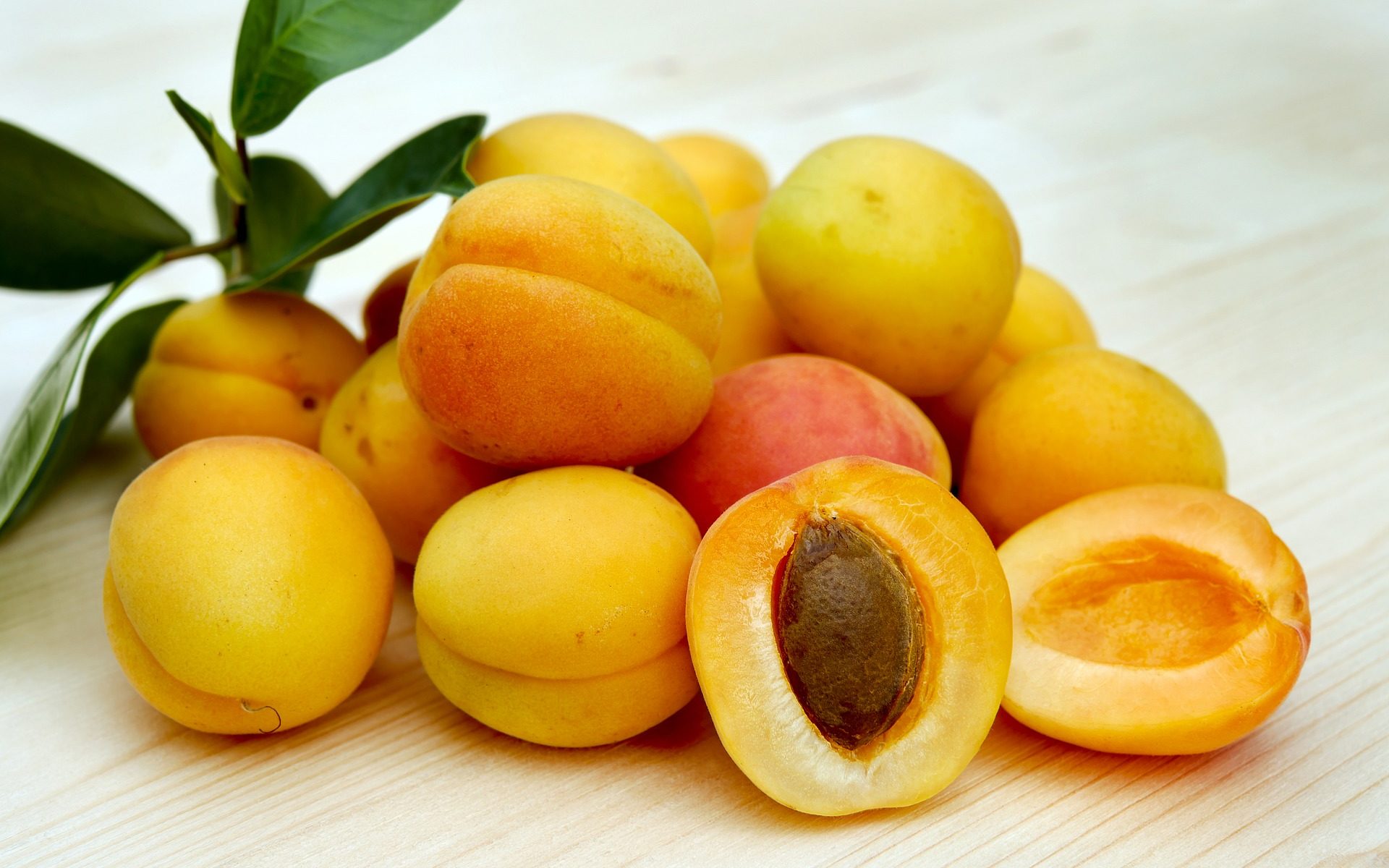In the past the apricots were grown mainly in vineyards and yards. From single or block planted trees in a number of plots of land near the Danube and the Black sea, there used to be obtained and are still now, very large yields of fruit. The high biological value of the fruit makes them valuable food and dietary and healing substance.
They are recommended for all cardiovascular and liver diseases. Especially appropriate are in cases of potassium shortage in the human body. Raw, sweet nuts are recommended of suffering from breathlessness, breast frog, tuberculosis, against sexual weakness, mental fatigue and nervous exhaustion. Therefore the fruits of the apricot tree are fairly referred to as “Food-medication” and are desirable and necessary for each household.
Apricot fruit contain extremely valuable for the human organism nutrients and mineral salts. They are used for fresh consumption and for processing into compotes, nectar, jams, dried and frozen, for liqueurs and brandies.
Biological and botanical features
The tree reaches from 3 to 7 m sometimes to 15 m in height. There will be a short deep and rather unstable winter rеpose. If there is warming at the end of the winter and the beginning of the spring, apart from the fruit buds, the secondary meristem of the stem, the root neck and the skeletal branches start growing. Trees come into blossom early and too often got damaged by tipping frosts, especially in unprotected places and areas with unsustainable winter. The bark and timber in the stem in proximity to the soil can also be damaged. Annually recurring frostbites lead to clogging of branches and reduction of their capacity. When leaf growing of such plants begins there occurs discrepancy between the needs of the above ground level part and incoming via the roots water and nutrients in which separate branches or whole trees suddenly wither and die in spring or in the first half of the summer. This undesirable and often met phenomenon is called apoplexy. Environmental fate of plants may be caused by fungus disease, vertical wilting and other reasons.
The apricot is quite cold resistant through the deepest winter repose and bears winter temperatures from -25 to -30°C, but after warming begins it can easily be damaged by minor frosts.
The longevity of apricots can be significantly increased if in winter the stems are whitened with lime milk and wiped in mats and other available materials to protect them from the direct influence of the fluctuations in temperatures.
The apricot is comparatively dry resistant. But if during the budding of the fruit buds in August and September there is a strong soil drought, blooming is spoiled. Apricots grow fairly well on different soils provided they are well drained.
The most favorable climatic and soil conditions in Bulgaria are along the Danube and the Black Sea. In the small private orchards apricot trees must be planted in shady places and direct sun should be avoided as there is a risk of premature development.
Varieties
It is appropriate to overlap several varieties with different period of ripeness for small farms. The ones very popular are: Kishinev Early, Early Red French, Hungarian apricot, Zemlianichna, Eastern Festival, Albena, Мarculeshti 19, Silistra Later, Кostuzhenska, Albena, Silistra Compote, Umberto, Late Dryanovska, etc. It should be taken into account that the variety Late Dryanovska requires foreign pollination and in some areas it doesn’t give fruit. Growing. One-year-old trees are used planted at a distance of 4 by 5-6 m. The early entry in plenty of fruit production brings to a rapid exhaustion of trees. This requires good care: processing, fertilizing, especially with potassic fertiliser, watering and last but not least pruning for renewal of the crown. Crop protection should not be underestimated and in particular the fight against early brown rot that attacks the young shoots, chamois, etc.
